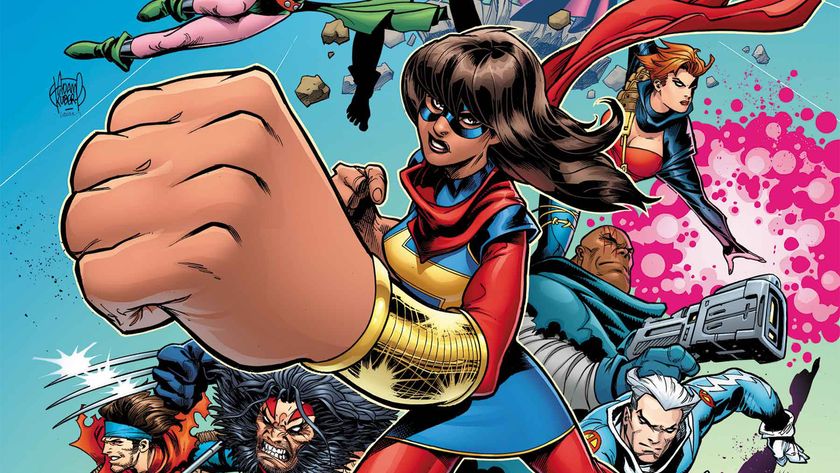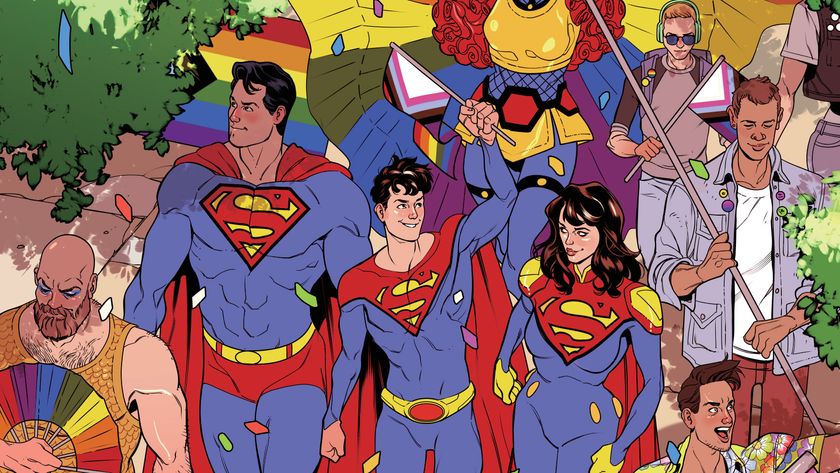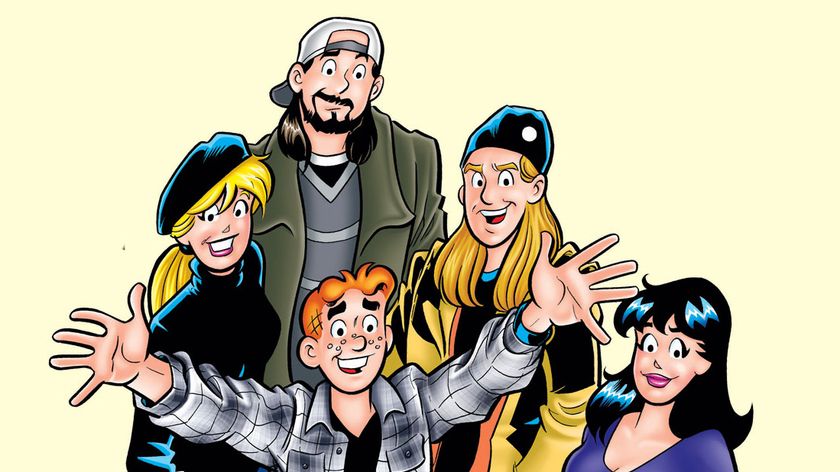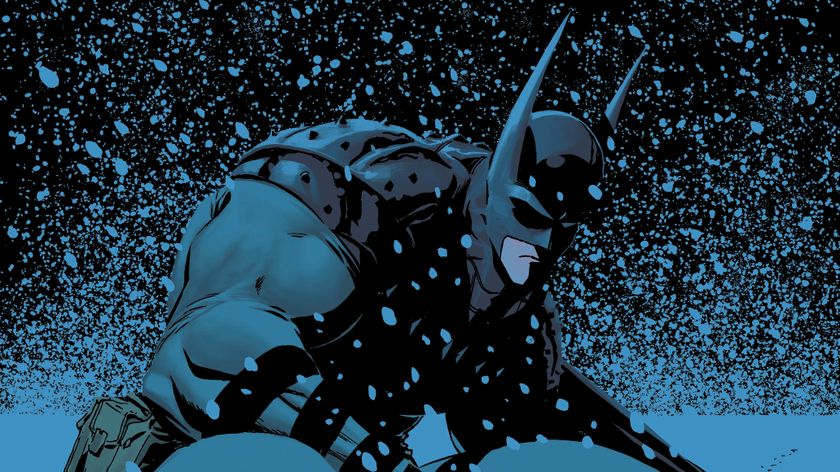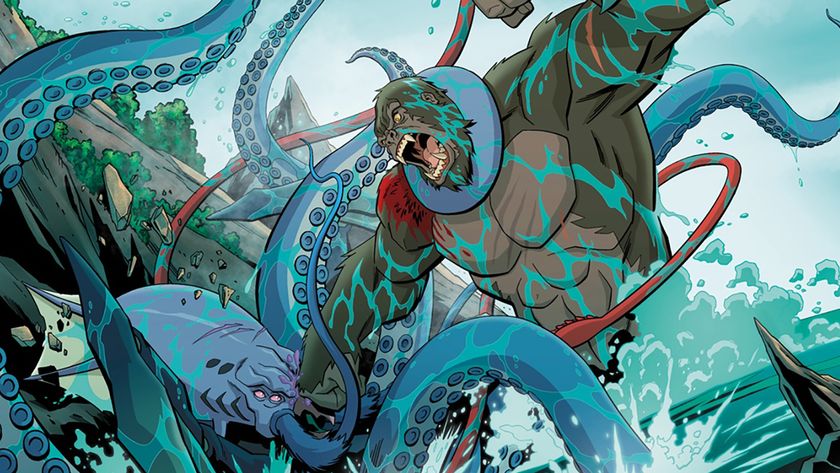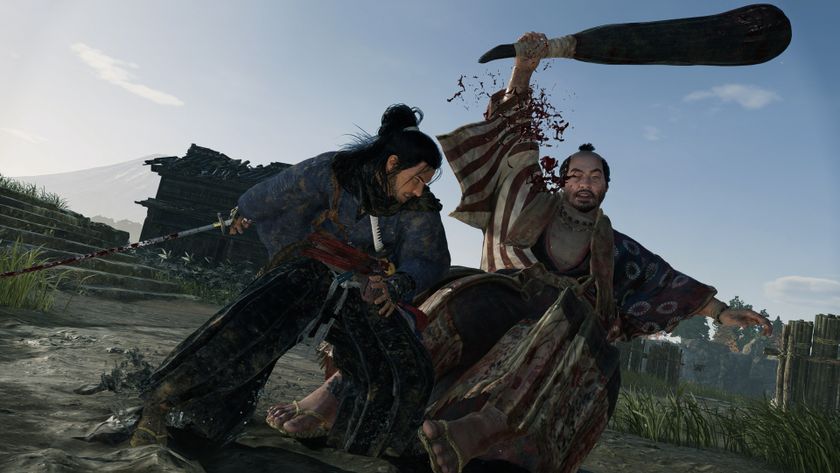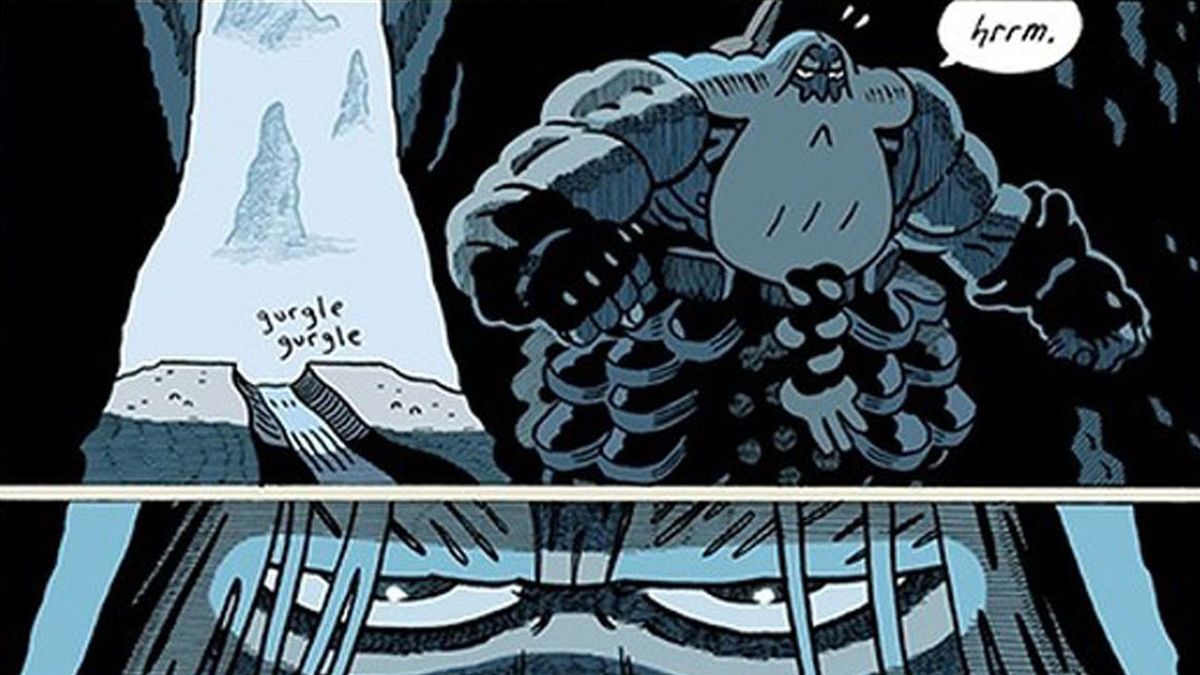
Andrew MacLean's Head Lopper returns this week for the beginning of a new arc - and a new mission that involves hunting down a treasure talked about in nursery rhymes.
Yes, even a barbarian like Norgal believes in nursery rhymes - sometimes.
September 16's Head Lopper #13 picks up the story of Norgal and his band of misfits as he leads them on the quest for a mythical stairway into the heavens called Mulgrid's Stair. At the top of the stairs, supposedly, sits an omnipotent, immortal historian who could tell Norgal where all his enemies are. Why would he want to know this? So he could kill them before they kill him, of course.
MacLean spoke with Newsarama about the series' return from hiatus, the story of this volume, and for a little bit of reflection about how far he and Head Lopper have come since its debut seven years ago.
Newsarama: Andrew, before we dive into the next volume of Head Lopper, it's been seven years since your launch of this series. Was something like this always the goal for you?
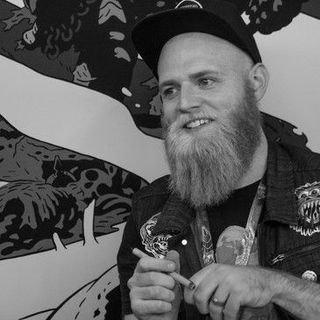
Andrew MacLean: I would say this was maybe the fantasy. At the time I was just taking things one little bite at a time. The very first goal was to self-publish 22 pages of story. The second goal was another 45 pages. I loved the idea of making it an ongoing series at a 'real' publisher but I wasn't so sure it was in the cards.
Nrama: And it has been, at Image no less.
Comic deals, prizes and latest news
Get the best comic news, insights, opinions, analysis and more!
This week's Head Lopper #13 begins the fourth arc of the series. Where are Norgal and Agatha after the events of the Knights of Venora from the previous arc?
MacLean: Yeah, so Norgal and Agatha leave the city of Venoriah in utter ruins but they leave with a few new friends. Arlen stays behind to rebuild the city but Brishka leaves with Norgal, as well as the Greybeard Goon, Goat.
When we pick up again with our band of misfits, they've been on the road adventuring for some time. Brishka is getting a little weary of it. This is not the holy crusade she thought she was on. Meanwhile, unbeknownst to the rest of the team, Norgal has started leading the group on a bit of a treasure hunt. His prize? Mulgrid's Stair and the unveiling of those who would steal the Head of Agatha. The hunted wants to hunt.
To do so, the crew will have to sneak into the walled kingdom of Arnak Pluth, where Norgal is well known as their former executioner. It complicates things. Shenanigans ensure. Heads roll.
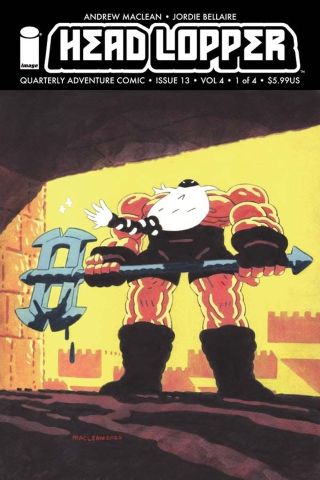
Nrama: So what can you tell us about the fabled Mulgrid's Stair that Norgal is looking for this time around?
MacLean: Mulgrid's Stair is this long staircase up into the clouds. It's invisible unless you pass through a hidden gate at the bottom. At the top lives Mulgrid himself, an immortal, who serves as the ultimate historian to all over Narschlahn.
After the adventures of the first three volumes, Norgal is tired of being hunted by demigods, and necromancers, and wizards. He wants to bring the fight to them but he doesn't know how to find them...but Mulgrid would know. Mulgrid knows everything.
Nrama: What is Norgal and Brishka's relationship at the start of this arc?
MacLean: At this point Brishka and Goat the Greybeard have been traveling with Norgal and Agatha for a little bit. The foursome already had a few small adventures of their own.
But Brishka, as a sworn Knight of Venora, has pledged to protect Agatha from anyone who would try to take her from Norgal... but she also thought Norgal was on some 'holy mission' as bestowed upon him by her own goddess.
But that's not really true. He's not on a holy mission, he's just killing stuff for money. She's a knight - not a sellsword, not a barbarian and she doesn't want to be. Brishka has started to regret leaving Venoriah.
Meanwhile, Norgal's not so good at teamwork and he's acting a little squirrely. This whole plan of his to go find Mulgrid is ridiculous. Mulgrid is a character from a nursery rhyme, and Norgal seems to think he's real.

Head Lopper #13 preview







Brishka tries talking a little sense into him but he doesn't seem to hear it... all the while he's making reckless decisions and leading his team into danger.
Nrama: Head Lopper is such a visually striking book. How do you challenge yourself as a creator on a visual level to keep things interesting for you with your designs?
MacLean: My barometer has always been to just try to make it something I would enjoy. If we're going to be seeing a lot of a character then they better look cool. Yes, for the readers. But also for me.
If you don't design yourself fun things to draw you're not going to have fun drawing it. If you're not having fun, readers won't have fun. Gotta keep it fun. Design is important.
Nrama: Going back, rereading Head Lopper and getting to now, you get to watch the evolution of your style. How did you get to where you are aesthetically? Was it experimenting, or something you felt like you had to do?
MacLean: I'm always trying to grow, trying to improve in some way, and to do so I’m experimenting constantly. I don’t think I ever really stop. I can't say I really have a style target in mind. I'm not moving towards something. Instead it seems to shift depending on what I'm interested in, in terms of my own reading or just working on something I consider a weakness.
Nrama: One thing I've noticed in the seven years since the initial Kickstarter for Head Lopper, your art style is so different. It's still very you in your figure compositions, but the cross hatching and lines you use to add shadows instead of going full on blacks is new. When did that evolve?
MacLean: When I started Head Lopper I hadn't been drawing comics for very long yet. In terms of figuring out a style, I felt like I was grasping at straws. But even after seven years there are still things I'm trying to improve.
The crosshatching in particular is something, I think first showed up towards the end of 'The Crimson Tower,' the second volume. I think after drawing stark black and white shadows for a while, I think I just wanted to add some more subtle lighting.
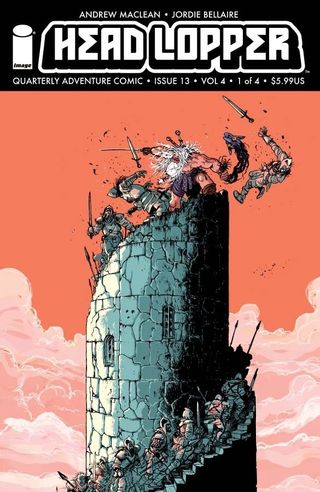
Nrama: In the beginning, Head Lopper had a lot of Conan comparisons, but here it's really become this fully fleshed out fantasy world. You have your histories, you have your poems and ballads, so when you're creating this ancillary material what are you looking for yourself?
MacLean: I like thinking of Narschlahn as this universe that exists parallel to other fantasy universes. In the Fafhrd and the Grey Mouser books, at some point they find a portal in some cave that connects fantasy worlds. It mentions Conan's Cimmeria as well as our own world and I think it's fun to imagine them co-existing. Even the Lord of the Rings references other worlds existing alongside Middle-Earth.
And so, yeah, in the beginning before the world was populated with lore, it was very Conan-esque. But something I always wanted to stay true to was building on what I started. So both the world and the characters start carrying their own histories more and more as we learn about them.
There are many reasons I like to add poems, songs, and a little bit of culture. Songs and poems are really effective ways to show an idea has existed in the world for a long time. It also makes a world feel lived in and authentic. It can also be a way to teach the audience something in an introducing way.
It's also just fun.
Lan Pitts likes watching, talking, and writing comics about wrestling. He has mapped every great taco spot in the DC and Baltimore areas. He lives with his partner and their menagerie of pets who are utterly perfect in every way.
